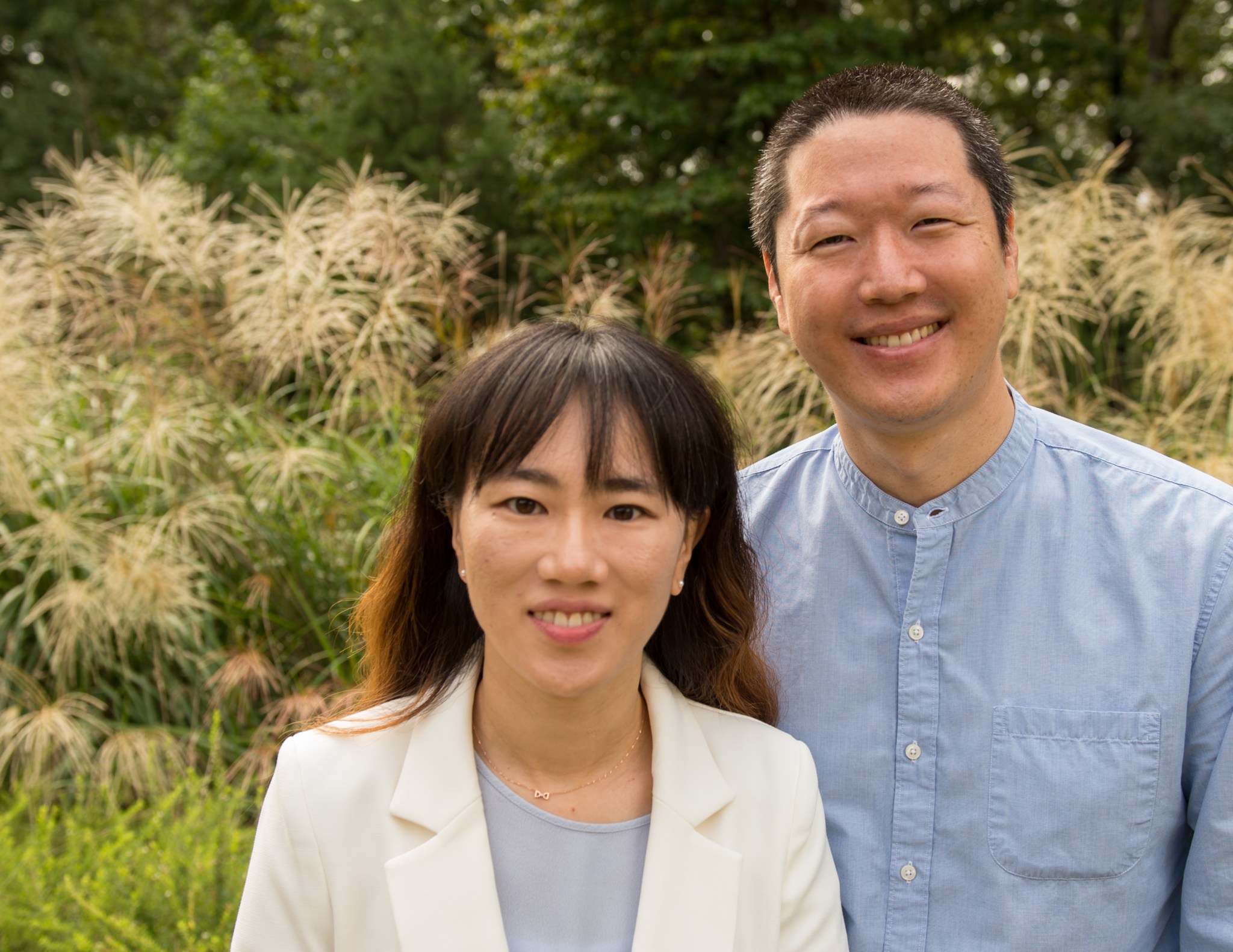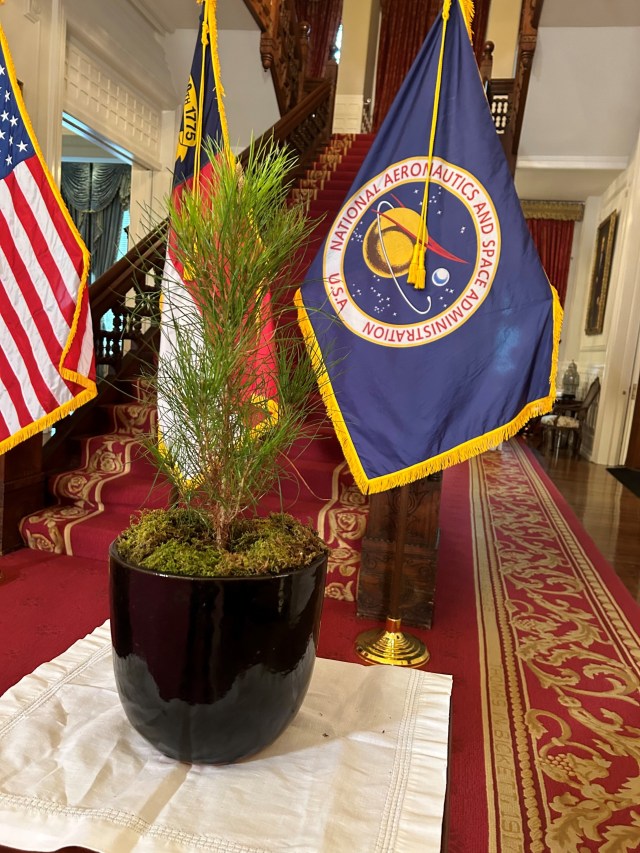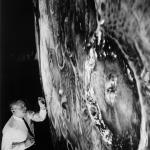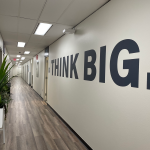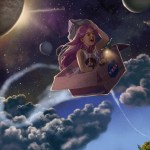Names: Nayeong Cho and Jaehwa Lee (husband and wife)
Titles: Both atmospheric scientists
Organization: Both Code 613, Climate and Radiation Laboratory, Earth Sciences Division
Both of you are atmospheric scientists and both of you work in Goddard’s Climate and Lab. Do you work together on your research?
Jaehwa Lee (JL): In general terms, yes.
I study aerosols, tiny particles in the atmosphere, which originate from natural sources such as dust storms, wildfires and volcanos as well as from human activity. Aerosols play a very important role in the Earth’s climate system by interacting with solar radiation and clouds. I produce aerosol data from NASA’s satellite instruments measuring reflected sunlight from space. My wife takes this data set among others and examines aerosol-cloud interactions. https://science.gsfc.nasa.gov/sed/bio/jaehwa.lee
Nayeong Cho (NC): As Jaehwa mentioned, aerosol is an important factor in Earth’s climate system. I work on aerosol-cloud-precipitation-radiation interactions. I study how aerosols affect cloud, precipitation and radiation properties in different cloud systems. Towards this end, we divide cloud systems into several subgroups based on cloud height and thickness. One of the strengths of our work is being able to look at the phenomena on a global scale using our own NASA Earth Observing System satellites. https://sciences.gsfc.nasa.gov/sed/bio/nayeong.cho
My husband and I have different supervisors. We hope in the future to write a paper together.
You work together all day long and then you go home together. Do you ever discuss work at home?
JL: We talk about work mostly on our way home. We commute together every day which gives us a lot of time to discuss.
NC: When I use a satellite data set, knowing how the data was produced tells us the strengths and weaknesses of the data set, which we must keep in mind when analyzing the data. I also want to know how exactly the measurements are made for different satellite sensors. So then I just ask Jaehwa.
How did you two meet?
NC: We both grew up in South Korea. We met in graduate school at Yonsei University in Seoul, South Korea, where we were both studying atmospheric science. Jaehwa was the most senior doctoral student and I was just starting my master’s.
JL: Here is a longer version of the story: While in graduate school, my adviser, professor Jhoon Kim at Yonsei, took a sabbatical and went to the University of California, Los Angeles, for a year. He generously took me with him to collaborate with scientists at UCLA and the Jet Propulsion Laboratory. He wanted me to learn how to interact with scientists from other countries. He actually brought every other student from his group to UCLA for a month each. I was there for a year, with students coming and going for a month all the time. My wife was one of them.
About two weeks after she arrived, I asked her out for lunch, knowing that she didn’t have anyone to have lunch with on Sunday as a stranger in the city. It was a traditional “sunny California” day.
NC: And we talked for hours and hours. About everything.
JL: Yes, we did. We talked about our families, what we like, what kind of person we would like to be, just everything. And we have been talking to each other ever since.
Why did you become atmospheric scientists?
JL: In my case, it was somewhat accidental. Originally I wanted to be an economist, so I majored in mathematics in college. In my junior year, I transferred to atmospheric science.
In South Korea, the majority of men perform their mandatory military duty, which is almost two years, at the age of 21, the junior year for most college students. At that time, with all my friends starting the service, I had to choose between becoming a soldier or an officer after graduation. I saw a government ad explaining that majoring in atmospheric science may allow you to serve as an officer in the South Korean Air Force. I was immediately intrigued. I transferred to atmospheric science and finished my bachelor’s degree from Yonsei University. By then, I was fascinated by atmospheric science and decided to continue on to graduate school for a doctorate. I was allowed to use my time doing research in place of traditional military service.
NC: When I was in high school, Rusa, one of the strongest typhoons ever, hit the Korean peninsula. More than 200 people died. Crops and houses were destroyed. I never before imagined that natural disasters could kill so many people and cause so much destruction. I was extremely shocked. After that, I became curious about clouds, precipitation and other atmospheric phenomena. That is why I majored in atmospheric science. I finished my master’s around the same time that Jaehwa finished his doctorate.
How did you both come to Goddard?
JL: A colleague who had been working in our group here at Goddard returned to South Korea and recommended me for his old job. My current supervisor, Dr. Christina Hsu, was one of the scientists I had admired for a long time. So I happily applied for the job. Two weeks after we got married in South Korea, we moved to Maryland and I started working at Goddard in this same lab.
NC: Although I did not yet have a job, I kept current in our field and attended meetings and conferences. I met a scientist from our group who told me that Dr. Lazaros Oreopoulos, my current supervisor, was searching for an atmospheric scientist to work with him. I applied and got the job.
You are now working among one of the largest and best groups of scientists in the world. What makes working in your lab special?
JL: Back when I was studying in South Korea, I quickly saw that Goddard is a giant in the field of aerosol science. Here we have an unmatched number of brilliant scientists working on both aerosol observations using satellite and ground-based instruments and aerosol modeling in Earth system models. We also have both data developers and analysts working together in one place. Our comprehensiveness is indeed unique.
NC: When I was in graduate school, I was inspired by people who wrote great papers about atmospheric science. Now at Goddard I get to meet the authors of those papers. It is always very exciting. I can now ask questions to these scientists whom I previously only knew from their papers. They always take the time to answer me.
Do you each have a mentor?
NC: I cannot single out anyone in particular, but whenever I attend a seminar or a meeting I can feel people’s passion and attitude towards their work, their science. I feel very lucky to be able to work here. Of course, working with Lazaros has only increased my profound respect towards him as a scientist and as a person. He works really, really hard. Even though he has to spend a lot of time managing, he never lost his scientific passion. He always encourages new ideas and catches up on what our group members are doing. And also his door is always open. He’s a very good man.
Ludo Brucker, my contractor manager, also is very encouraging. In fact, Ludo suggested that I be interviewed today, something I would not normally have done.
JL: Many kind and brilliant people have helped me along the way and I am very grateful to all of them. My high school math teacher taught me how to dream big, my thesis adviser gave me a lot of opportunities on my way to becoming a scientist, and my current supervisor, Dr. Christina Hsu, and now my former teammate, Dr. Andew Sayer, also had tremendous influence on me. Dr. Hsu always encourages me to push the boundary of the science we do, and makes me feel I am better every day. It’s a real pleasure working with her. I was deeply impressed by his attitude towards science and people. Andy is now working with a different group at Goddard. I miss working with him a lot. He remains a true mentor and good friend of mine.
For vacation, do you go on science field trips together?
NC: We try to take a road trip every year. In 2017, the year of the “Great American Eclipse,” we took a two-week road trip from here to Las Vegas. We visited several national parks along the way including Rocky Mountain, Arches and Zion National Parks to name a few. Our goal was to see the eclipse in Kansas City, which had a total eclipse.
JL: It was surreal!
NC: Stunning!
In your spare time, do you have any interesting hobbies?
JL: Both of us are swimmers and also golfers. My wife is the better golfer, but I am the better swimmer.
NC: You are good at both.
JL: When I first came to Goddard, I bought a used, manual car with 150,000 miles. The car had a lot of problems. One of my hobbies was maintaining this old car. I’m a “DYI” kind of guy when it comes to car maintenance. We used this same car for our road trip and it had 190,000 miles before we started. We sold the car in Las Vegas.
NC: That was our “goodbye my car” road trip. Then we flew home and got another car for me, which Jaehwa maintains too.
By Elizabeth M. Jarrell
NASA’s Goddard Space Flight Center, Greenbelt, Md.

Conversations With Goddard is a collection of Q&A profiles highlighting the breadth and depth of NASA’s Goddard Space Flight Center’s talented and diverse workforce. The Conversations have been published twice a month on average since May 2011. Read past editions on Goddard’s “Our People” webpage.





























